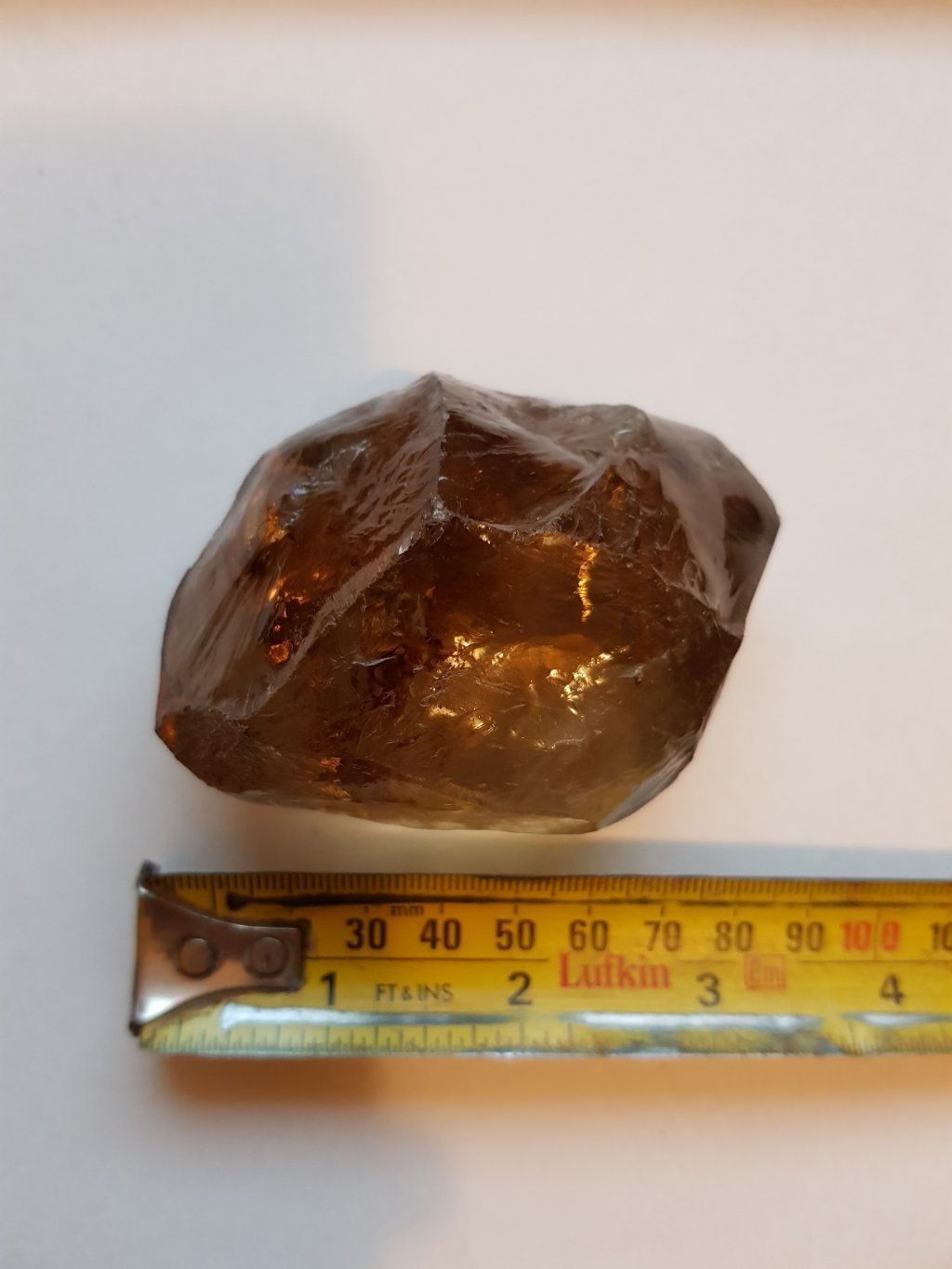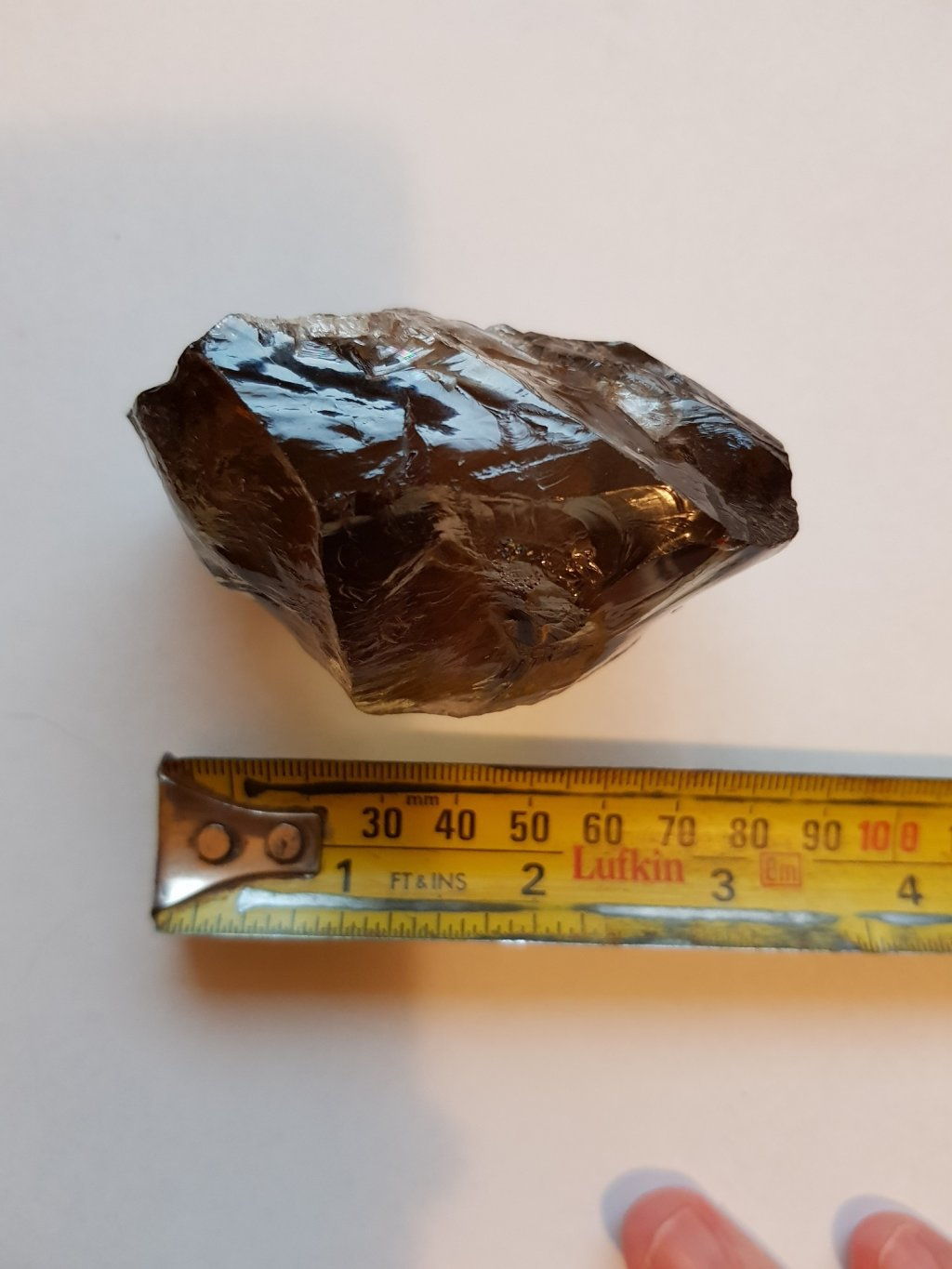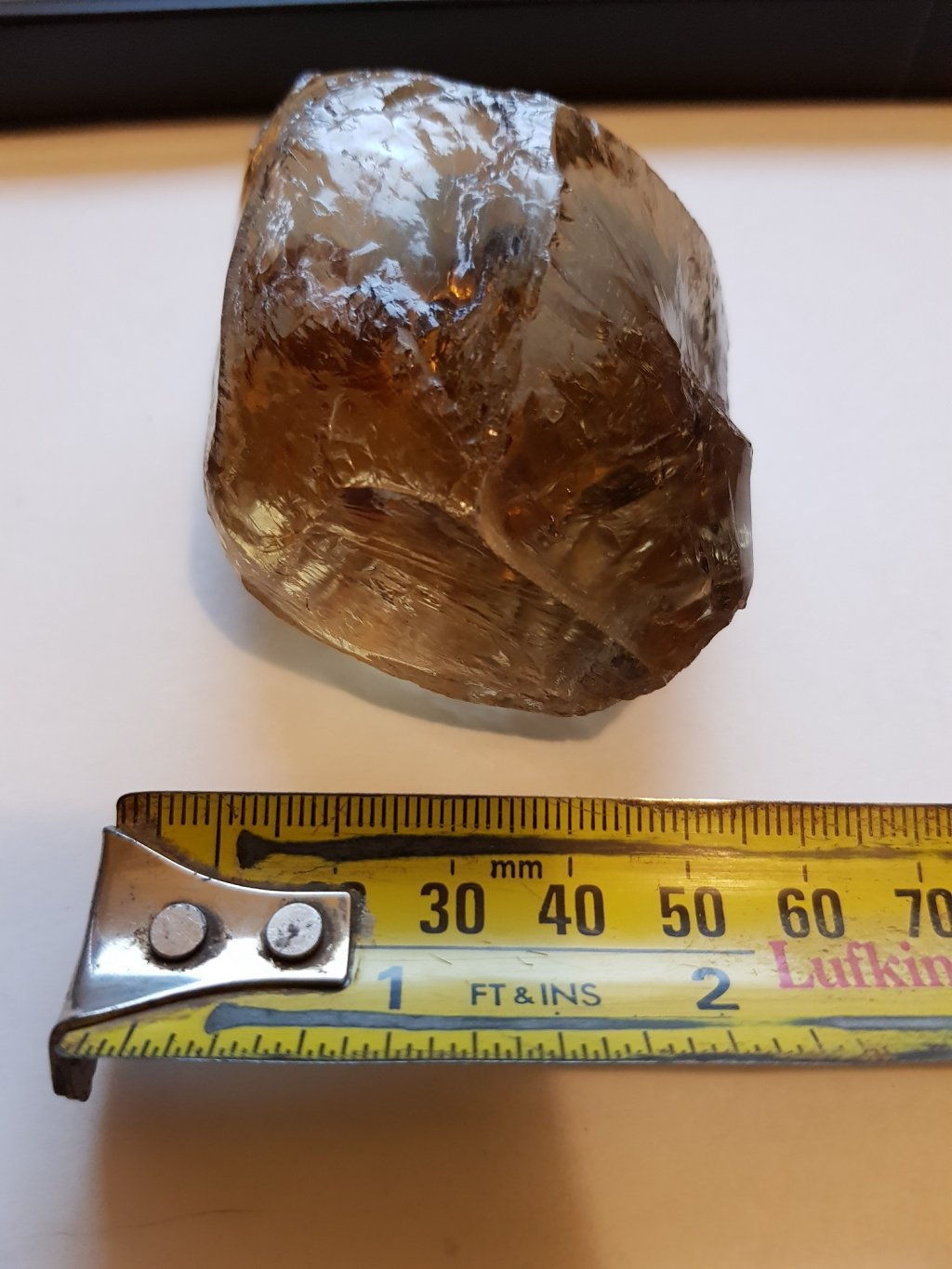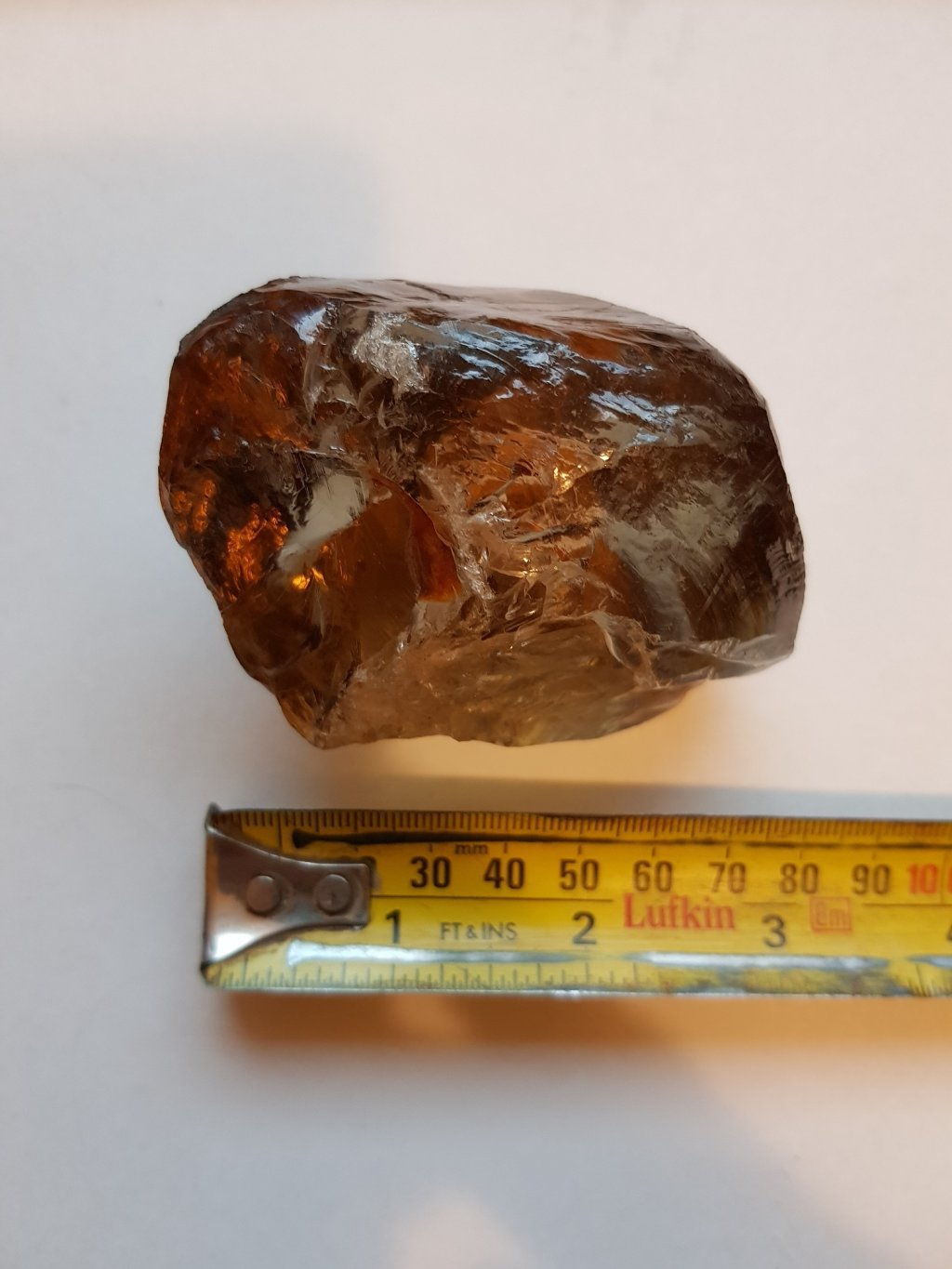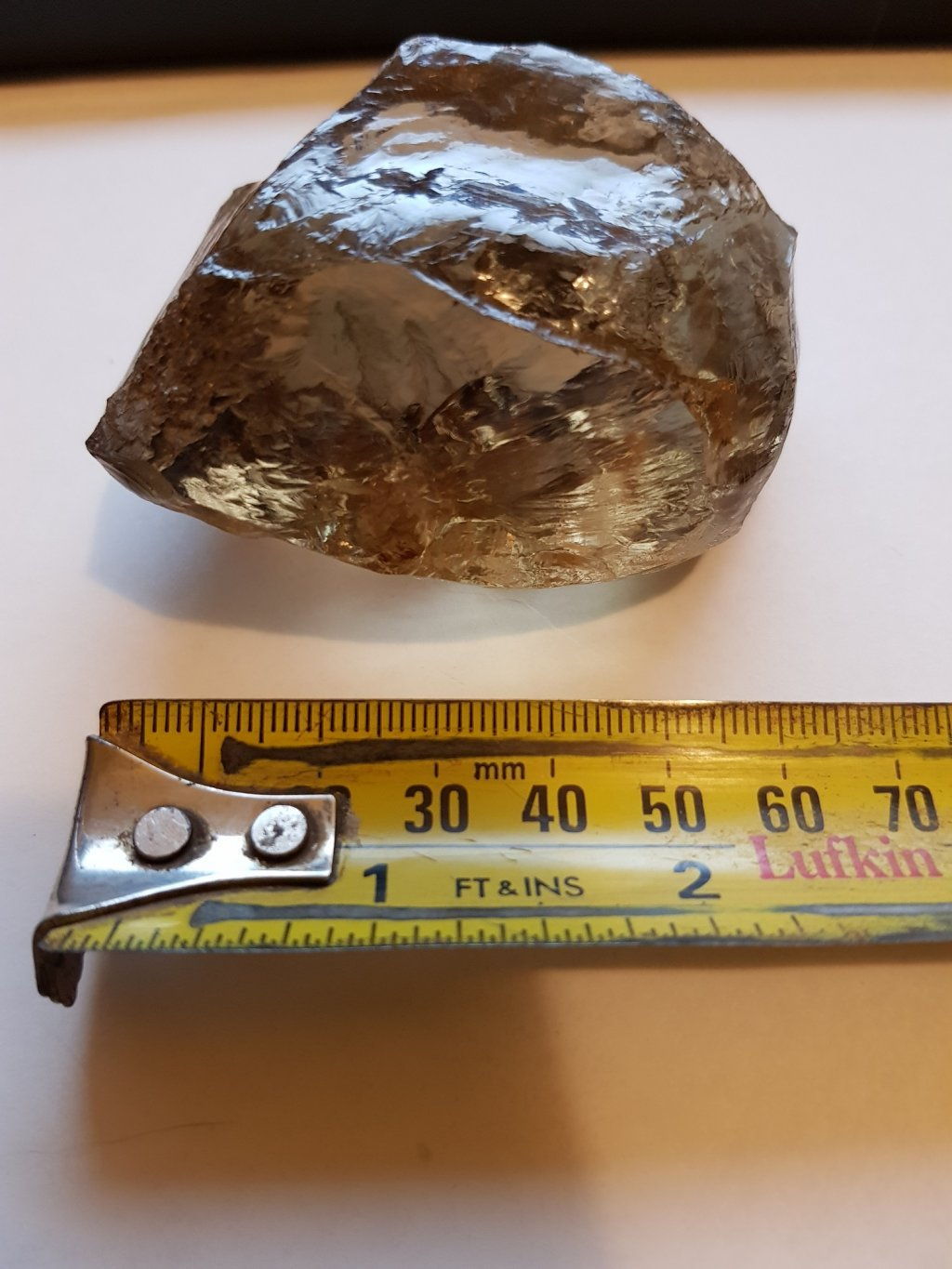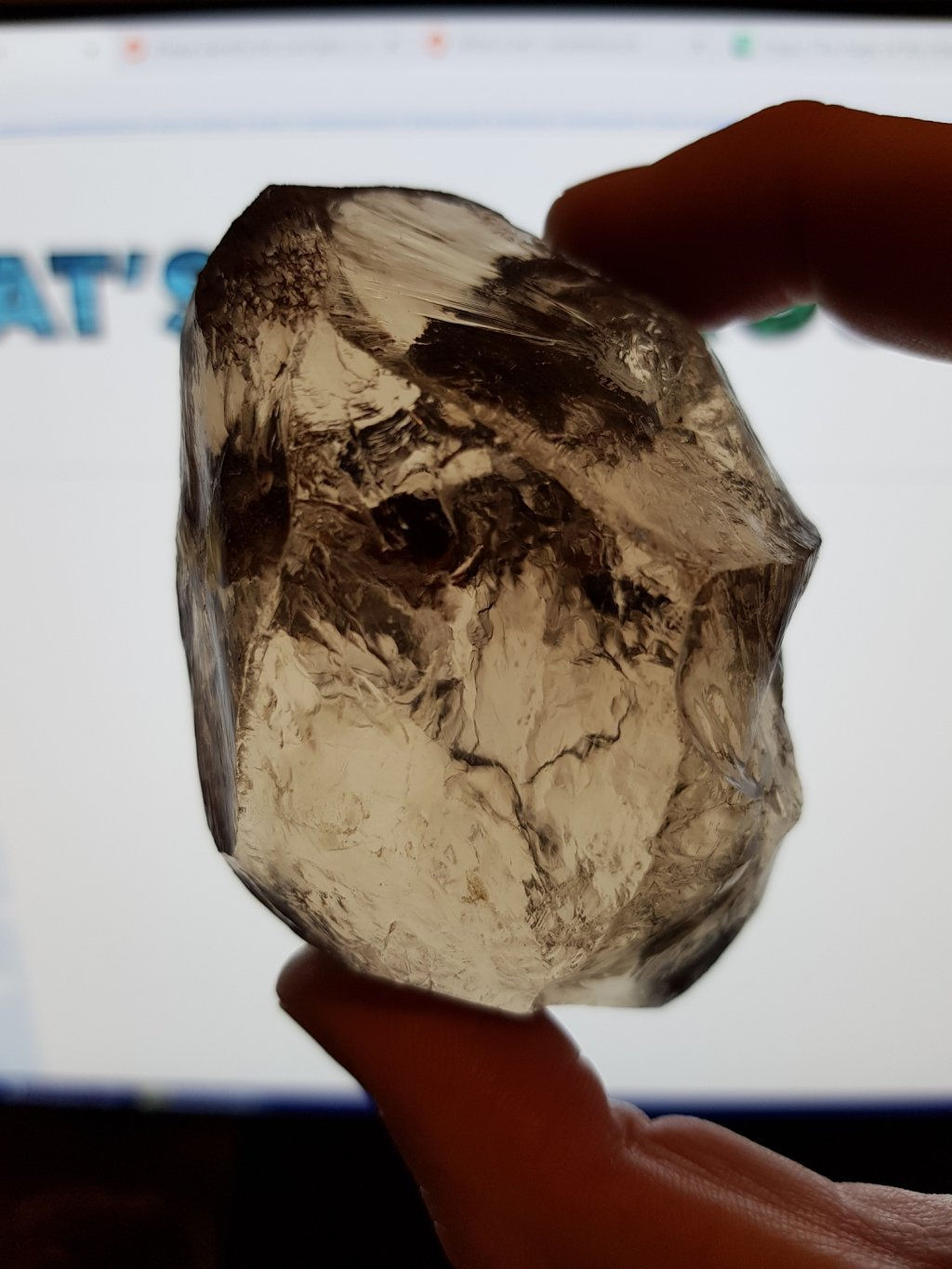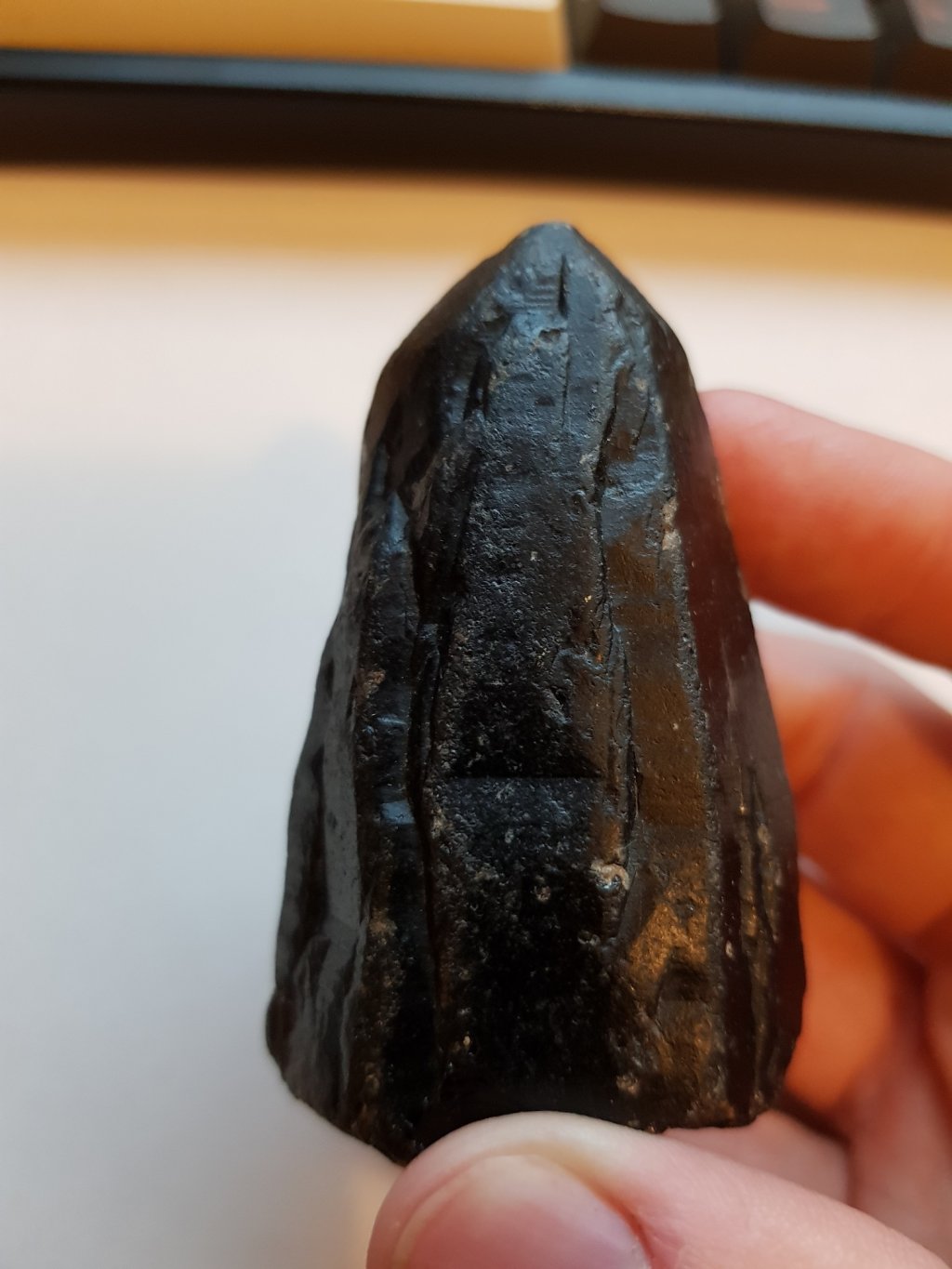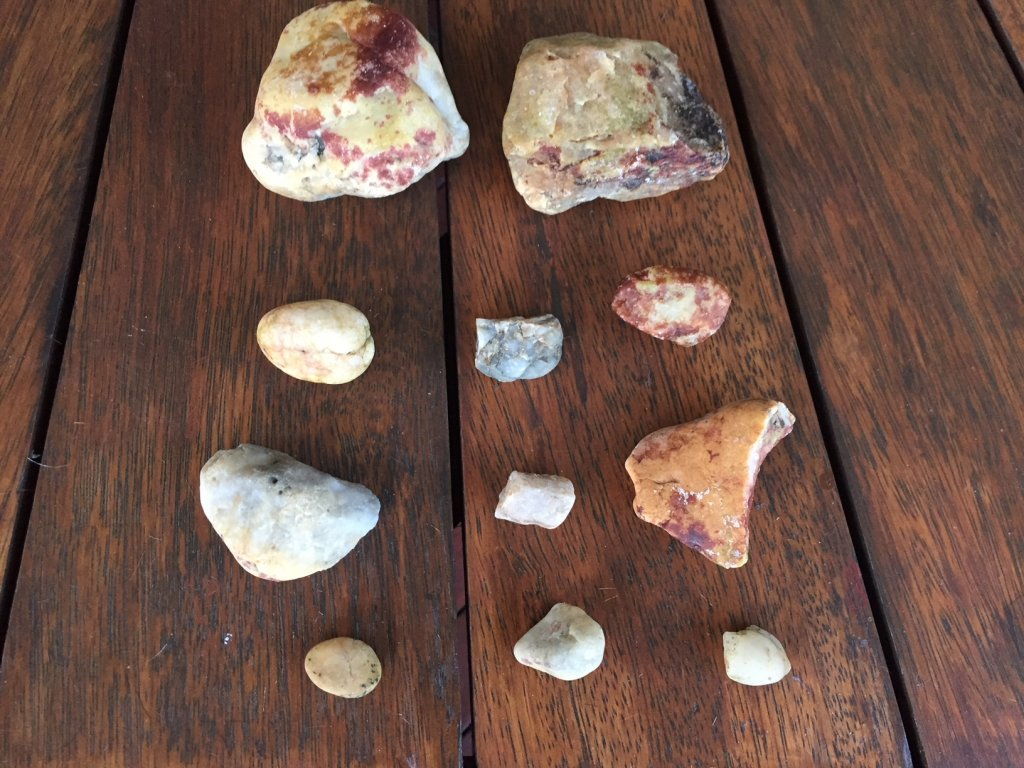My dad gave me a bucket of interesting rocks on Christmas day, that he said were some his dad had found years ago (he died in 1991, so he wasn't kidding!).
Unfortunately dad didn't know from where he got them, but I'm pretty sure it's not pyrite on it, that he said someone had suggested.
It's not brassy enough for pyrite, or the right shape, in my opinion.
I think perhaps it's tin. Which I thought was strange when it peeled away into clear layers. Can someone please confirm this a characteristic of tin? (See pic in hand).
And is it likely to have gold mixed with a tin deposit like this one, to crush and pan it?
https://www.prospectingaustralia.com/forum/img/member-images/13534/1545922566_rocks.jpg
https://www.prospectingaustralia.com/forum/img/member-images/13534/1545922592_rocks2.jpg
Thank you.
Cheers,
Megsy




